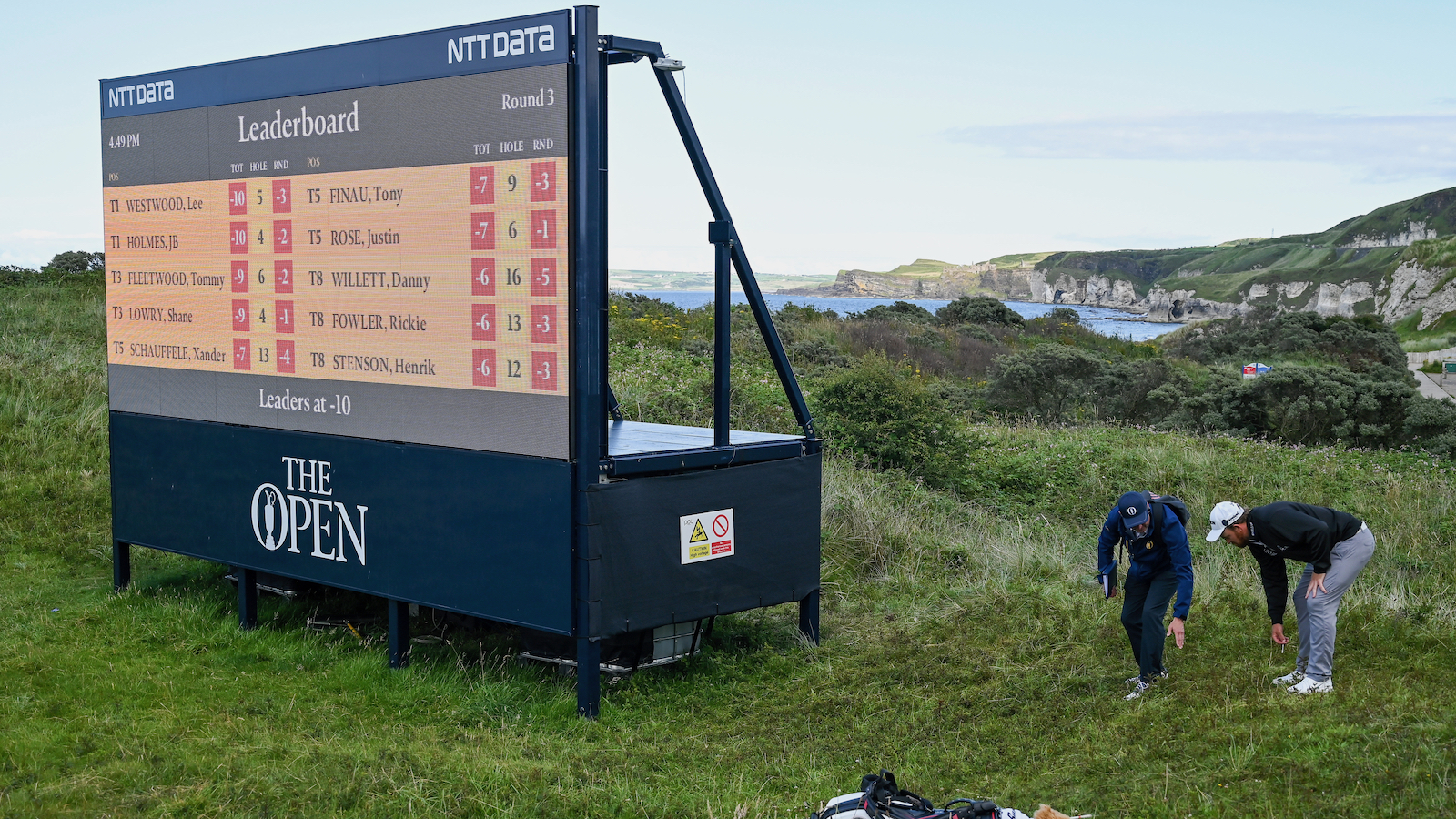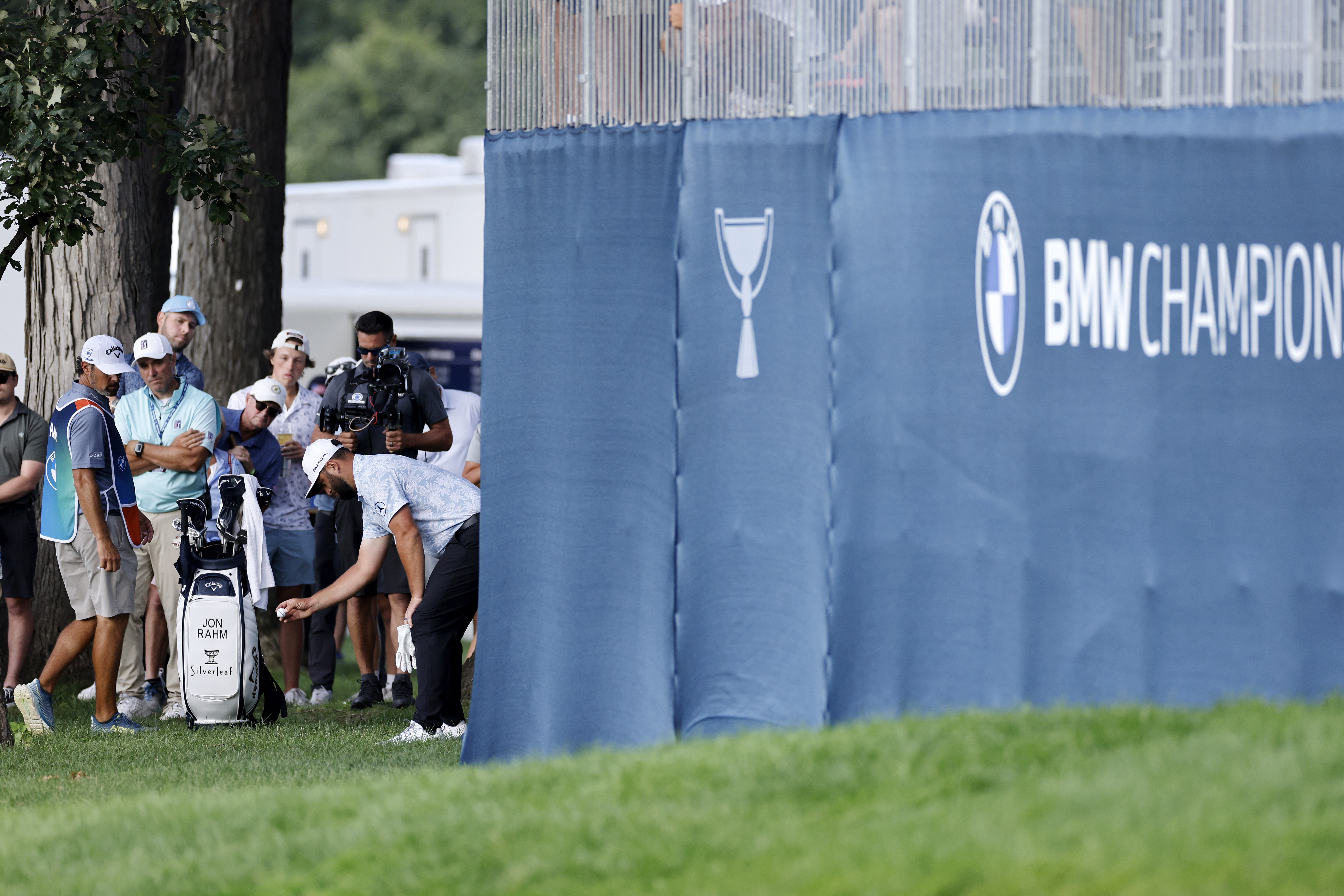What Is TIO In Golf?
You may have heard golf commentators or Rules experts refer to TIOs during TV coverage, but what are they?


Let’s start at the beginning by unpacking those three letters – TIO stands for Temporary Immovable Obstruction.
The Rules of Golf address movable obstructions in Rule 15.2 and immovable obstructions (one of the four types of abnormal course conditions) in Rule 16.1, so what are temporary immovable obstructions?
Well, we will all have seen players on tour getting relief from grandstands, TV towers, hospitality tents and other similar structures and these would all be classified as TIOs due to their nature – they are temporarily situated on the course and are not intended to be a permanent feature.

Structures such as TV towers would be classed as TIOs at The Open and other golf tournaments
While club golfers are likely to encounter TIOs less frequently, you will need to know what you are allowed to do if one does interfere with your stroke – perhaps a scoreboard by the 18th green at a big open day or a marquee serving food and refreshments close to the 9th green on captain’s day.
Committees can provide relief from such TIOs via Model Local Rule F-23 as these are not considered to be part of the challenge of playing the course. Such a Local Rule allows you an additional option over what you can do when taking relief from an immovable obstruction under Rule 16.1.
First, for relief to be allowed, you must have interference from the TIO. This means either physical interference, line-of-sight interference (which you don’t get from an immovable obstruction), or both physical and line-of-sight interference.

Jon Rahm taking line-of-sight relief under a TIO Local Rule from a grandstand at the 2023 BMW Championship
Physical interference is when the ball touches or lies in the TIO, or the TIO interferes with the player’s area of intended stance or swing. Line-of-sight interference is when the player’s ball is in or touches the TIO, or the TIO is located on a straight line between the ball and the hole, or within a club-length on an equidistant arc where the TIO would be on the player’s direct line of sight to the hole.
Subscribe to the Golf Monthly newsletter to stay up to date with all the latest tour news, equipment news, reviews, head-to-heads and buyer’s guides from our team of experienced experts.
The one club-length area is often known as the ‘corridor’ and is there to provide a little leeway to ensure you are able to achieve full relief from the TIO.
The TIO Local Rule cannot be used as an excuse to get out of a bad lie and, just as when attempting to obtain free relief under abnormal course conditions, it will not be allowed if you are choosing an unreasonable stance or stroke to ensure interference exists, or, for example, if you cannot make a stroke because your ball is in a bush that lies outside of the TIO.
To take free relief in the general area of the course under this additional line-of-sight option you must drop the original ball or another ball in your relief area and play it from there. Your reference point is the nearest point of complete relief where both physical and line-of-sight interference no longer exist. Your relief area must then be in the general area, must not be nearer the hole than your reference point, and must provide complete relief from both physical and line-of-sight interference by the TIO.
If the ball is lying in a bunker or penalty area, the procedure is the same, but your relief area must be in that same bunker or penalty area. If there is no point of complete relief within the bunker or penalty area, you are allowed to find the point of maximum available relief instead. Alternatively, you may take relief outside the bunker or penalty area, but it will cost you one penalty stroke.
TIOs may rarely come on your radar, but now you will know what to do should you encounter one. More details can be found in the committee procedures part of The R&A website under section 8. This details various Model Local Rules, with F-23 the relevant one.

Jeremy Ellwood has worked in the golf industry since 1993 and for Golf Monthly since 2002 when he started out as equipment editor. He is now a freelance journalist writing mainly for Golf Monthly. He is an expert on the Rules of Golf having qualified through an R&A course to become a golf referee. He is a senior panelist for Golf Monthly's Top 100 UK & Ireland Course Rankings and has played all of the Top 100 plus 91 of the Next 100, making him well-qualified when it comes to assessing and comparing our premier golf courses. He has now played 1,000 golf courses worldwide in 35 countries, from the humblest of nine-holers in the Scottish Highlands to the very grandest of international golf resorts. He reached the 1,000 mark on his 60th birthday in October 2023 on Vale do Lobo's Ocean course. Put him on a links course anywhere and he will be blissfully content.
Jezz can be contacted via Twitter - @JezzEllwoodGolf
Jeremy is currently playing...
Driver: Ping G425 LST 10.5˚ (draw setting), Mitsubishi Tensei AV Orange 55 S shaft
3 wood: Srixon ZX, EvenFlow Riptide 6.0 S 50g shaft
Hybrid: Ping G425 17˚, Mitsubishi Tensei CK Pro Orange 80 S shaft
Irons 3- to 8-iron: Ping i525, True Temper Dynamic Gold 105 R300 shafts
Irons 9-iron and PW: Honma TWorld TW747Vx, Nippon NS Pro regular shaft
Wedges: Ping Glide 4.0 50˚ and 54˚, 12˚ bounce, True Temper Dynamic Gold 105 R300 shafts
Putter: Kramski HPP 325
Ball: Any premium ball I can find in a charity shop or similar (or out on the course!)